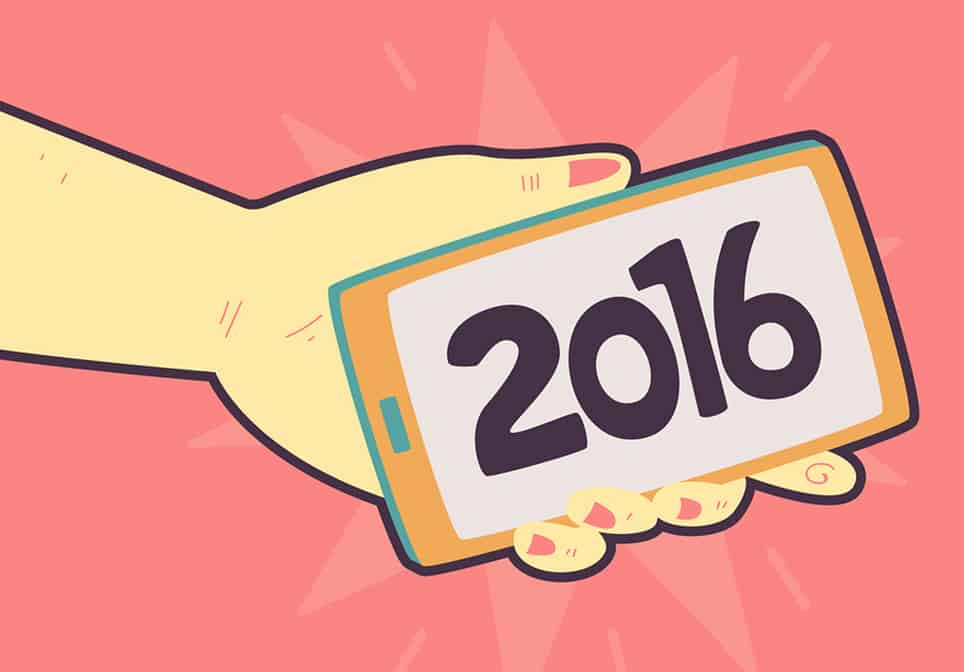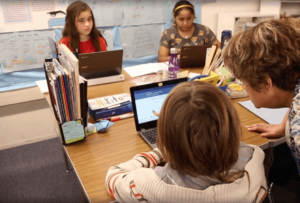#YearInReview: The Best of 2015, 10 Predictions for 2016

With 2016 just around the corner we are looking back at a #YearInReview. Here are the first six posts:
- The year of the mobile (finally)
- Google for the Win: The Ascendence of Chromebooks & Google Apps
- 8 Ways Crowdsourcing Advances Learning
- 8 Ways Machine Learning Is Improving Education
- End of Standards-Based Reform, Rise of Maker
- 1,500+ smart people doing innovative work
A pretty good year. In this final post, we’ll recap 2015, a pretty good year all in all, and make a few predictions about the year to come.
Things got better in 2015:
- US unemployment dropped almost a point to 5% (but is twice that for African Americans)
- The economy grew by about 2% (while the Chinese economy slowed to 7%)
Positive long term trends continued to provide benefit:
- High school graduation rates in the US increased to 82%
- Full day kindergarten enrollments have tripled (but preschool attendance is flat)
And worldwide:
- More than 1 billion people have been lifted out of extreme poverty since 1990
- Since 1990, the global under-five mortality rate has dropped 53%
- There was no polio and almost no Ebola in Africa.
Things got better in 2015 except if you…
- were in long commodities or a farmer (prices on oil, corn, coal down by almost a third);
- lived in North Dakota or Alaska (the price of crude dropped from $66 to $36/barrels);
- were investing for your retirement (flat market);
- worried about gun deaths in the US (nearly 1100/month);
- were in a health coop that closed; or
- lived in Syria, Afghanistan, or Iraq.
Tech was largely disappointing…
- unless you owned a sliver of one of the 145 unicorns (startups valued at more than $1 billion).
- The much-hyped Apple watch, TV, and music were yawners,
- Amazon Fire flamed out, and
- Most video games failed to live up to the hype.
- Digital currency Bitcoin stalled but many came to appreciate the underlying Blockchain infrastructure, including security applications in education.
US EdTech investment hit a record $1.9 billion, up from $1.4 billion last year. A few of the highlights include:
- Professional learning: Lynda ($186M), General Assembly ($70M), Udemy ($65M)
- Platforms: Instructure’s ($40M plus an IPO), Duolingo ($40M), Udacity ($105M)
- School/program management: AltSchool ($100M), Hotchalk ($230M)
With almost 200 investments it got a little easier for startups to find seed investment and a little harder to put together subsequent rounds. B rounds (second priced round usually requiring demonstration of a viable business model) fell from 21 to 15 and increased in size from $21 million to $32 million.
International EdTech venture investments added another $1 billion to the tally, for a total of $3 billion. There were a handful of really big deals in China (14 investments totaling $671 million) and lots of small bets in India (21 investments of $59 million).
Hot in 2016. Before turning to 2016, it’s worth remembering that no one predicted the drop in oil or the rise of ISIS in 2015.
- Prep for success. More schools and districts and networks will formalize their approach to developing success skills. Also called habits of success they include self-direction and perseverance, growth mindsets, and social skills.
- Better formative. More students are benefiting from lots of formative feedback in blended learning environments, but it’s still difficult to combine all that information. Maybe 2016 will be the year super gradebooks will be a killer app. Watch for the winners of the Assessment for Learning grant program (late January announcement) for signs of the path forward.
- Secondary v3.0. In addition to regional Next Generation Learning Challenges funds, we’ll see a NewSchools Catapult and well funded XQ Super School grantees.
- Chromebooks. “Even if Microsoft is No. 1 in volume and Apple is No. 1 in revenue, from the growth perspective, nobody can beat Chromebook,” said Rajani Singh, senior research analyst at IDC. The dominance of Chromebooks will continue through 2016 dramatically increasing the percentage of 1:1 environments (here’s why).
- Mobile. Behind all of these trends will be more mobile access by teachers and students. The new year is time for schools and partner organizations to make sure their sites are mobile responsive.
- PBL. You’ll see more and better project-based learning in 2016. PBL benefits from several trends (including the first five). Great resources from Buck Institute and support from New Tech Network will help (CEO Lydia Dobyns describes how).
- Competency. A half a dozen states will make competency-based advancements to policy and assessment including eliminating seat time, adding competency components to graduation requirements, and using frequently scheduled secondary end of course exams. They may use an innovation zone (discussed here) an incentive for schools, networks, and districts.
- Micro-credentials. States, districts and networks will adopt blended and competency- based professional learning systems (as described in Preparing Leaders for Deeper Learning and iNACOL Blended Learning Teacher Competency Framework). Many will use the Digital Promise framework on the Bloomboard platform (listen to a podcast). With the shift to personalized professional development, schools should adopt the motto “No more boring PD in 2016.”
- Guidance and support systems. With more informal, modular and mobile learning options, expanding access to part time online learning (often called Course Access) and new postsecondary options, secondary students need stronger guidance and support–the spine of next-gen secondary schools (see paper). We’re hoping that translates into better guidance and support platforms in 2016.
- Helpful algorithms. Predictive analytics will continue to grow in importance and will inform everything from lesson sequences to lunch menus (see 8 ways analytics and machine learning are improving learning).
Augmented and virtual reality hit $150 billion revenue in 2015 but they are a few years away from being widely used in education. In 2016 we’ll see a few more promising applications virtual field trips, science simulations, and career education. Call AR/VR an honorable mention for 2016.
All the best in the new year.
For more #YearInReview, check out:
- (Finally) The Year of Mobile
- 1,500+ Smart People Doing Innovative Work
- Google for the Win: The Ascendence of Chromebooks & Google Apps
Stay in-the-know with all things EdTech and innovations in learning by signing up to receive the weekly Smart Update.






0 Comments
Leave a Comment
Your email address will not be published. All fields are required.